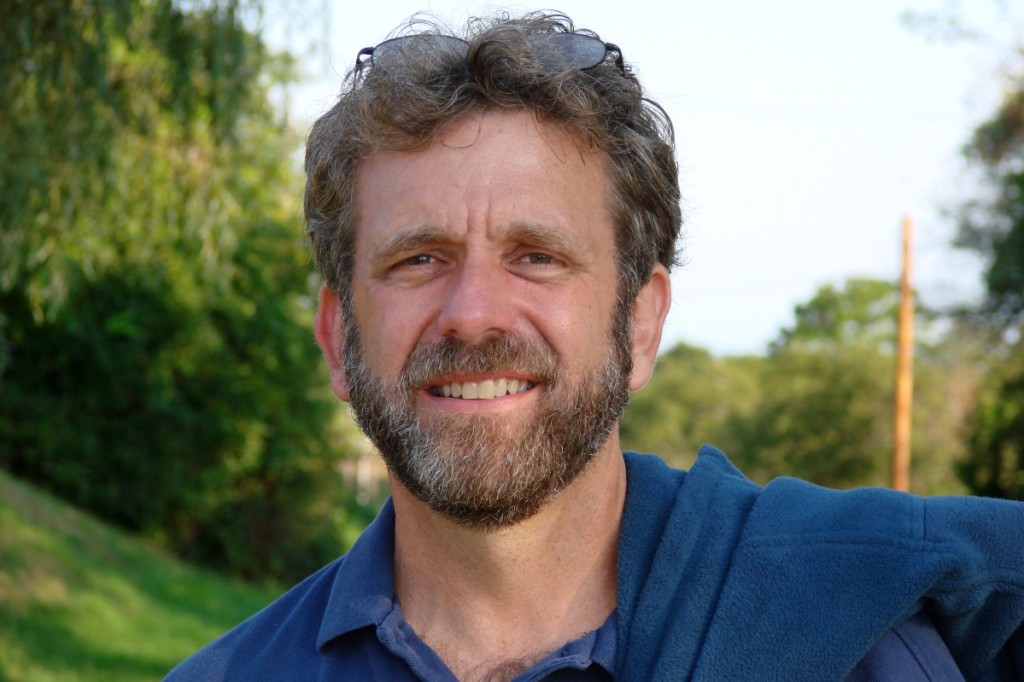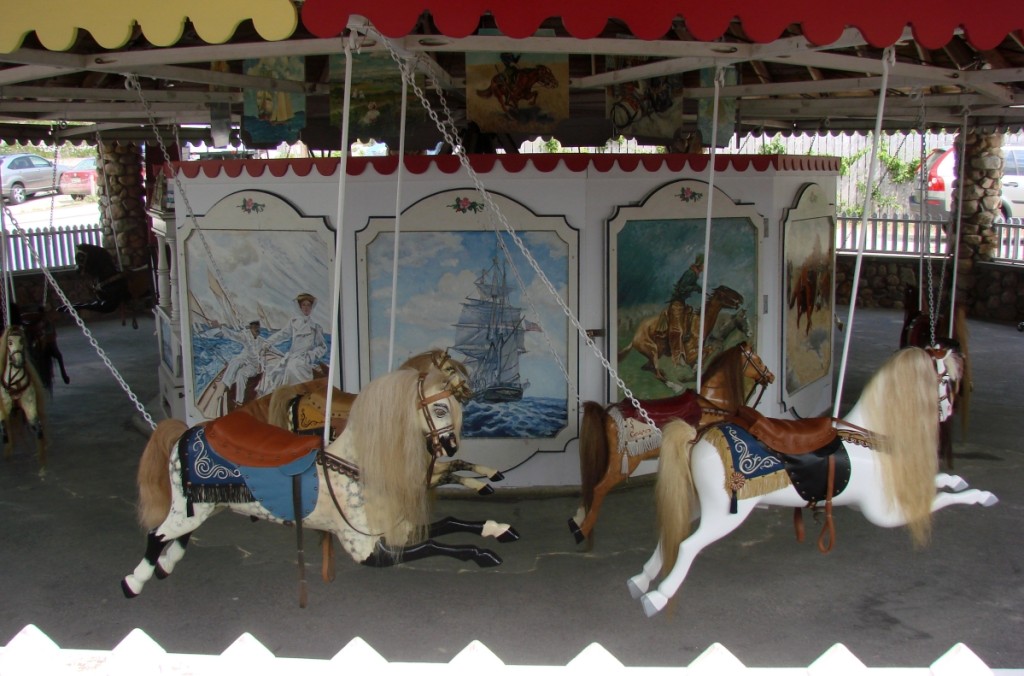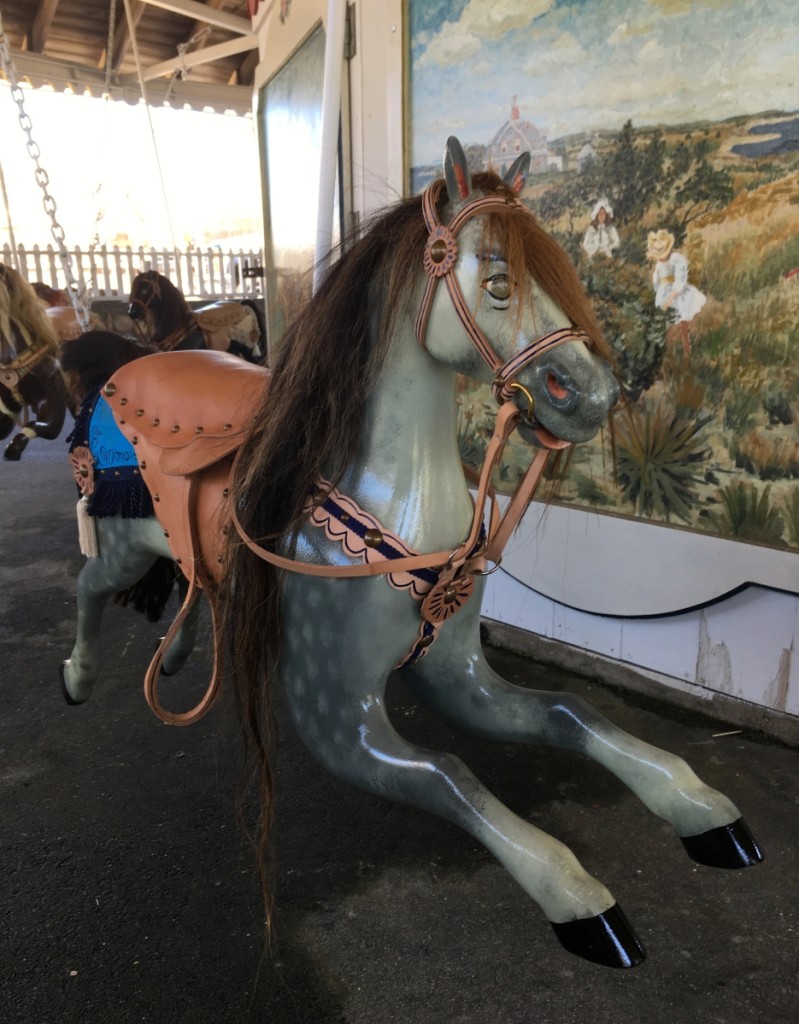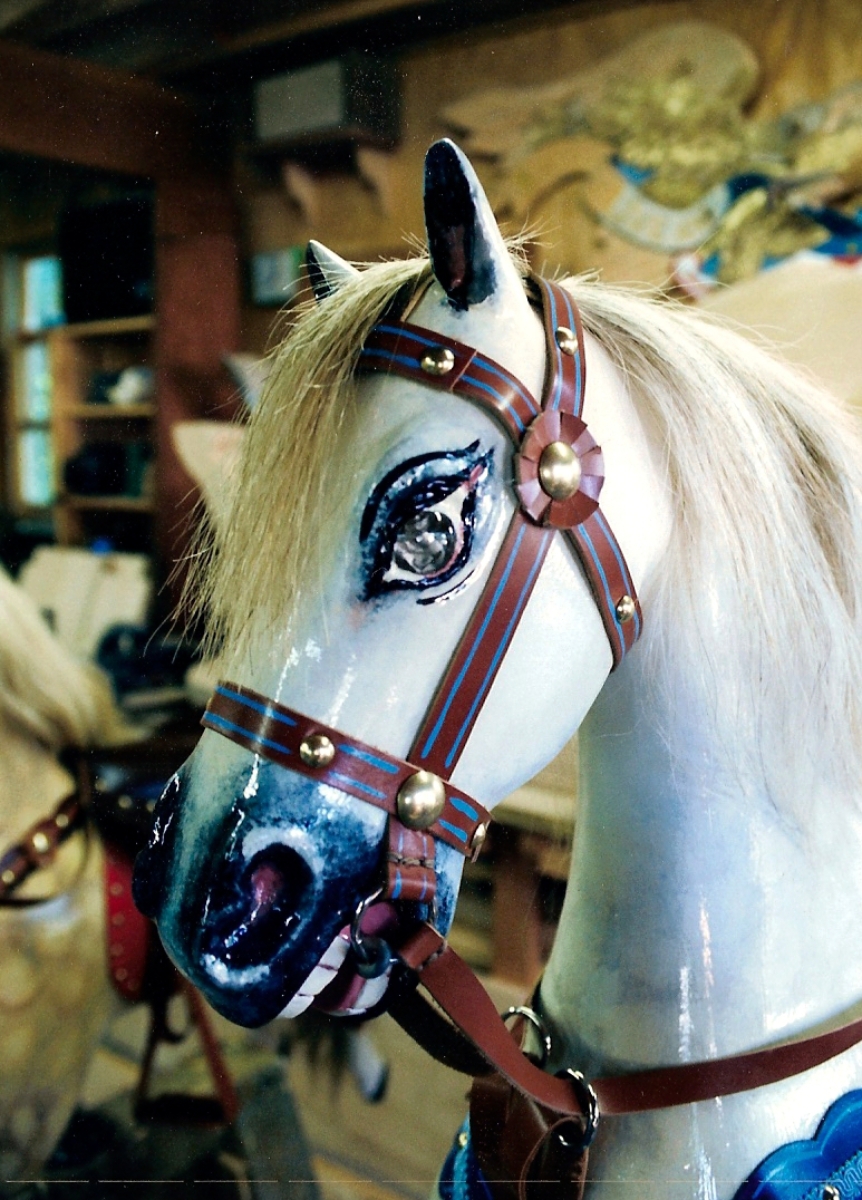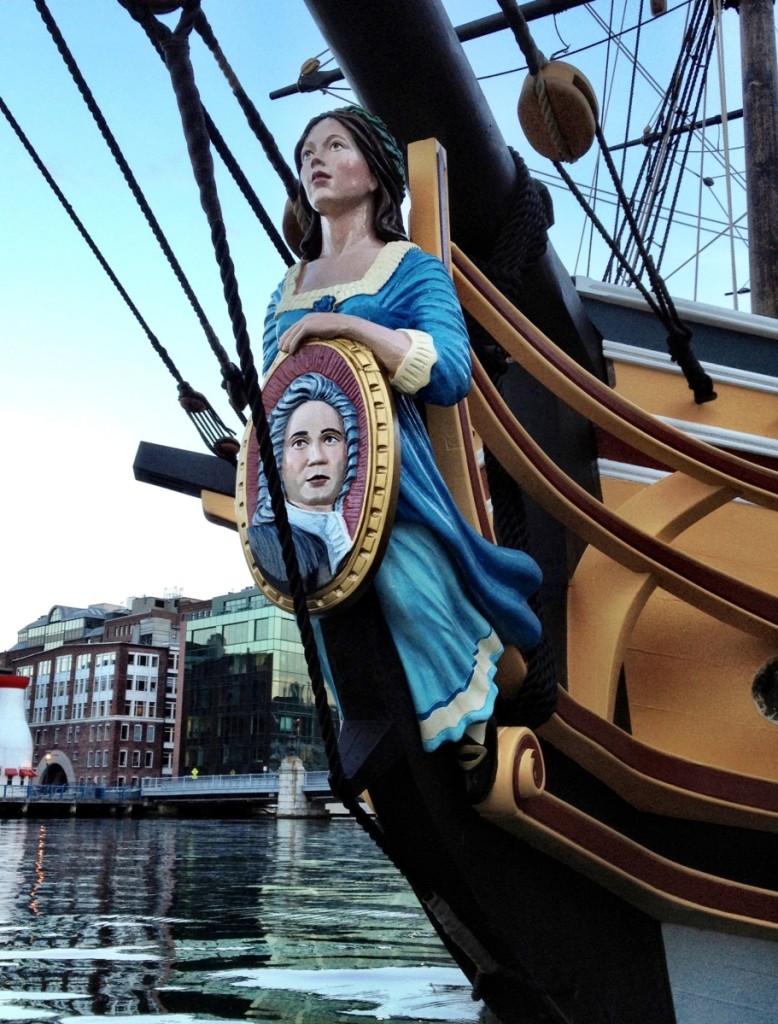On a wet and chilly week in October, we reached out to Gary Anderson, a carver of figureheads, eagles, signs and horses from Stonington, Conn. Fittingly, he was headed to Watch Hill, R.I., to start breaking down the historic Flying Horse Carousel as its season of entertaining children is over. Anderson removed the carousel’s large, 4-by-4-foot rounding-board paintings – every one of which he painted in the winter of 1997 – to clean them. “The bearings get greased and covered, the motor is protected and the clutch goes off to be resurfaced. The horses come off their poles and are taken to a seasonal, unheated library in Watch Hill and bide their time until they are brought back to my shop for their annual cleaning and refurbishment,” he said. Come spring, excited kids under the watchful gaze of parents or caregivers will again climb onto the horses and reach out for the elusive gold rings.
How did you come to be a carver?
Upon my graduation with a degree in journalism and art, the newspaper business was already shrinking, and in an effort to pay my student loan, I found myself shoveling coal on the Steamboat Sabino at Mystic Seaport. I ran the steam engine in the warm weather and worked in the shipyard during the off season. The seaport was a wonderful place to learn about wood, tools, ships, history, the arts and how to conserve them. I was especially enamored with the carved figureheads, eagles and quarter boards. Their shipyard had every conceivable modern tool, and their exhibit buildings had every conceivable antique tool. There was also a working ship smith and carving shop on the grounds, and, most important, they had a staff who were happy to pass along what knowledge they had. It was as close to an apprenticeship in the crafts as you can find anywhere. But all of those attributes came tied to shoveling coal every summer. So my dad and sister and I started a sign-carving business in her garage in Noank. My sister was a calligrapher at the time, my dad had been a woodworker before World War II; combining their talents with what the seaport had taught me became a winning collaboration. And now, 40 years later, I am still carving figureheads, eagles, signs, horses and maintaining the Watch Hill Carousel in a barn behind my family’s home in Stonington.
What led you to become the caretaker for the Watch Hill Carousel?
In 1992, I was carving signs for a store in Watch Hill just down the road from the carousel when the owner asked if I could also paint the 20 merry-go-round horses and fix their wobbly legs. The man who had been maintaining the horses had died and the herd was showing its age. The real horsehair manes and leather saddles wear quickly at the beach, especially as most of the riders, ice cream cones in hand, are still in their wet bathing suits. The carousel is on the National Register of Historic Places with a date of 1883, but I believe it’s older than that. The paint was a quarter-inch thick in places and severely cracked; the wood under the paint had turned to dust. It was clearly apparent that there was no quick fix for the horses this time around.
What did you discover?
Removing 50 coats of paint and repairing thousands of earlier “quick fixes” that were nails, spikes and even concrete as a filler took years. But it also gave me an opportunity to study every glue joint, mortise, tool mark and paint layer. That’s when I realized the horses weren’t originally built to be carousel horses; they were actually modified rocking horses that became a carousel.
American rocking horses that were patented and built in the 1860s and 1870s were much more like Watch Hill’s horses than any carousel horse produced in the 1880s. It was also a key as to how to best restore them. Luckily, rocking horses weren’t used as roughly as an outdoor carousel, and there were still some good examples of them in their original paint and trappings that I could use as models in the restoration process.
Can you describe some of that process?
As to the restoration I undertook, the horses required removing all the paint. Once they were bare, it was easy to understand their transformation from bow rocker to spring horse and finally to carousel horse. Those same horses had holes drilled through their bodies, just forward of the saddle, through which iron rods were slid, that allowed them to hang from a beam, completing their evolution from rockers to carousel horses.
What is the history behind these “flying” antiques?
In the mid-1800s there were a flurry of patents for rockers that were safer than the traditional bow rocker. Children were literally being killed when riders would flip the horses over on themselves. One of these “safety rockers” patented by Andrew Christian of New York in 1861 was called a spring horse. The horse would bounce up and down on a spring under its belly that pivoted on the horse’s rear legs. But the angle of a traditional bow rocker’s front legs would hit the floor while the rider bounced up and down. So Christian raised and outstretched the horse’s front legs on his spring horse as though it were jumping over a barrel. The outstretched forelegs on a spring horse are in exactly the same position as the Watch Hill Carousel’s horse legs. Christian died in 1871. Another company, Hoffmire, Kelsey and Cornwell, continued the business until it was taken over by Charles Dare, who many regard as the father of the “fairground-style” of carousel horse. It’s one of these builders, which one I’m not sure, who built the rocking horses that became the Watch Hill Carousel between the 1860s and 1870s.
So, a carousel or a merry-go-round? What is the difference?
The Watch Hill Flying Horse Carousel has been called both a merry-go-round and a carousel throughout its history as they are technically the same thing. The “flying horse” part does set it apart from most carousels, though, as it doesn’t ride on a spinning platform. The horses hang on rods hooked onto the sweeps above that look like the spokes of an enormous, horizontal wheel. As the horses pick up speed, the centrifugal force swings them out further and they do feel as though they are flying over the ground. Originally, these merry-go-rounds were cranked by hand. Later, horses provided the power, and the Watch Hill Carousel was even water-driven at one point with a water tank above that ran a turbine that spun the machine.
What is some of the history of how it came to the seaside village?
The time between when the carousel was built and when it arrived in Watch Hill is still something of a mystery. The carousel can be seen in photos from the 1890s, and there are colorful stories of it being run by gypsies who traveled the shoreline, arriving as early as the 1880s and later abandoning it right in Watch Hill. There are also tax records that show Edward Hagar, a Civil War veteran and something of a colorful guy himself, leased the property and ran the carousel from 1889 until his death in 1905; it’s been found that he also ran a carousel at Savin Rock in West Haven, Conn., before that. Perhaps the truth lies in a combination of these stories.
What is the trickiest repair on the horses?
They are fragile. At somewhere around 150 years old, every repair is tricky. They are museum pieces, but they are also outdoors on the beach and used every day. As a museum piece, when a leg breaks, I repair it to keep as much original wood as possible. But if it had been a carousel horse used daily with no history to influence the decision, it would have been more practical to carve a new leg and replace it. That isn’t an option with this antique piece of Americana. It’s a constant challenge: the outstretched forelegs, an adaptation to the bow rocker design, aren’t very strong. The kids climbing on and off the horses step on the legs and over time crack the grain and loosen the joints. Also, the saddles and trappings are attached with tacks, which have to be replaced every couple of years; in places the wood resembles worn pin cushions. I straddle a line between conservation and preservation with every repair and refurbishment.
Environmental hazards?
Complicating it all further, the carousel is only a couple hundred feet from the surf zone; blowing sand, constant moisture, riders fresh off the beach and literally birds making nests from the manes and tails in the roof above make for a maintenance nightmare. Sanding the horses, preparing them for fresh paint is problematic as even fine hand sanding removes a fraction of wood – and each fraction adds up when a hobby horse is 150 years old.
All of this is why I believe the path the carousel is on, carving reproductions of the original horses to take the brunt of the summer season, is the best way to preserve the older horses so that they can continue spinning into the future for each new generation.
Besides the carousel horses, where can we see other examples of your craft?
Though most of my carvings and art restorations are in private homes, you may have seen some of my work. In Connecticut, I carved and leafed both the Charles W. Morgan‘s stern eagle and the eagle figurehead on the schooner Amistad. In Boston, you can see the life-size figurehead of John Rowe’s niece on the ship Eleanor and a large scrolled billet head on the ship Beaver at the Tea Party Museum. In New York, or perhaps this time of year in the Virgin Islands, you can see the figurehead and carvings on the three-masted schooner Arabella. Or if you are in Philadelphia, there’s a large gold-leafed eagle on top of the stone gazebo on the Schuylkill River Dam. If you go to Vermont, you might find me, as I’ve been teaching woodcarving classes each summer at the Sculpture Center and Carving Studio in West Rutland, and after class I’ll be working stone chisels through marble. I find that after all these years working wood, I truly enjoy stone carving; it’s an exciting material that speaks to me. For a long time now, though, I haven’t been very far from a carousel horse.
–W.A. Demers

